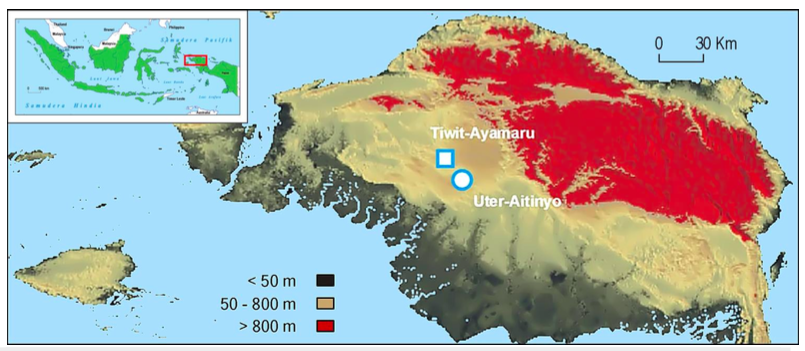- Some Indonesian Boeseman’s Rainbowfish aquaculture farms appear to have hit a slump, study says.
- Unsuitable rearing conditions may be responsible for this, researchers suggest.
- Improving rearing conditions could increase production of these fish in aquaculture farms, which could in turn alleviate pressure on the wild endangered rainbowfish populations, researchers write.

The endangered Boeseman’s Rainbowfish (Melanotaenia boesemani), found only in the Ayamaru region of West Papua in Indonesia, is a popular ornamental fish. Over-harvesting of this brilliantly colored rainbowfish has pushed the species towards extinction. So increasing production of these fish in aquaculture farms could alleviate pressure on the wild populations. But some Indonesian rainbowfish aquaculture appear to have hit a slump.
Unsuitable rearing conditions may be to blame, suggests a recent study published in Mongabay’s open-access journal, Tropical Conservation Science.
“At present, farmers claim a decrease of both quantity and quality: males are not as colored as in the wild, growth rate and fecundity are slower; and morphological abnormalities frequently occur,” the authors write in the paper. “They attribute these observations to loss of genetic variability and possible inbreeding.”
To test whether the farmers’ claims were indeed true, researchers from Indonesia and France assessed the genetic diversity of captive strains of rainbowfish reared in six aquaculture farms located around Jakarta, and compared them with that of wild rainbowfish populations.

The team found that aquaculture-reared rainbowfish had similar genetic diversity as those found in the wild. This suggests that there was no major inbreeding in the reared populations, the authors write.
So problems observed in reared rainbowfish could be due to poor water quality and poor management of the aquaculture farms, they speculate.
“All investigated farms are located in industrial and densely populated peri-urban areas,” the authors write. “As Jakarta and its suburbs have no waste water treatment system, the water used for rearing these fish is probably of very poor quality, and may contain many chemical and hormonal pollutants, both of which have been proven to alter major fish traits such as reproduction and growth.”
The researchers add that the loss of coloration in the male rainbowfish could be because of altered turbidity conditions of the water. But this needs further investigation, they note.
So by adapting better management of the quality of waters used for rearing the rainbowfish, farmers may be able to harvest better-looking and more productive fish, the authors write.
“The results presented here… indicate that, in spite of the threats that Ayamaru is facing, it is still possible to prevent the extinction of Boeseman’s Rainbowfish,” they add.
Citation:
- Nugraha, M. F. I, Pouyaud, L., Carman, O., Widyastuti, U., Zairin Junior, M., Kadarusman and Avarre, J. C. 2015. Genetic diversity of Boeseman ́s Rainbowfish (Melanotaenia boesemani) reared in Indonesian farms compared to endangered natural populations. Tropical Conservation Science 8 (3): 796-812.
